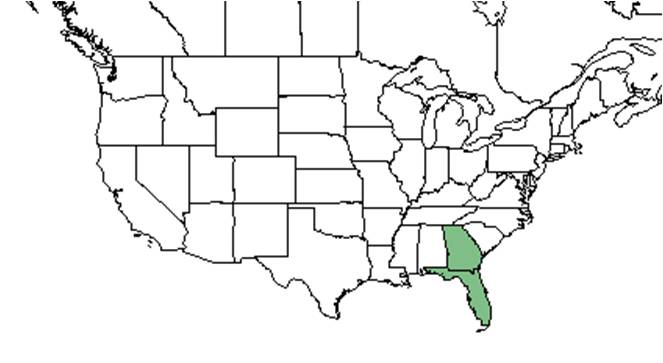Difference between revisions of "Asimina reticulata"
KatieMccoy (talk | contribs) (→Description) |
KatieMccoy (talk | contribs) |
||
| Line 38: | Line 38: | ||
===Seed bank and germination=== | ===Seed bank and germination=== | ||
===Fire ecology=== <!--Fire tolerance, fire dependence, adaptive fire responses--> | ===Fire ecology=== <!--Fire tolerance, fire dependence, adaptive fire responses--> | ||
| − | + | Following a disturbance such as fire or cutting, ''A. reticulata'' will immediately respond by putting up several leafy shoots with forming flower buds that will not open until the following growing season (Kral 1960). | |
===Pollination=== | ===Pollination=== | ||
Revision as of 20:44, 24 November 2015
| Asimina reticulata | |
|---|---|
Error creating thumbnail: Unable to save thumbnail to destination
| |
| Scientific classification | |
| Kingdom: | Plantae |
| Division: | Magnoliophyta - Flowering plants |
| Class: | Magnoliopsida - Dicotyledons |
| Order: | Magnoliales |
| Family: | Annonaceae |
| Genus: | Asimina |
| Species: | A. reticulata |
| Binomial name | |
| Asimina reticulata Shuttlw. ex Chapm. | |

| |
| Natural range of Asimina reticulata from USDA NRCS Plants Database. | |
Common Name: Netted Pawpaw
Contents
Taxonomic notes
Description
A description of Asimina reticulata is provided in The Flora of North America.
Asimina reticulata is a long-lived perennial that reaches 2-4 feet in height [1]. Leaves are simple and alternate with a white flower [2]. It has a rusty orange pubescent (Kral 1960).
Distribution
Ecology
Habitat
Asimina reticulata occurs in poorly drained sands in areas such as slash pine and longleaf pine-saw palmetto flatwoods, and is often abundant enough to be classified as an understory dominant (Kral 1960). Associated species include Quercus, Pinus, Serenoa repens, Lyonia lucida, L. ferruginea, and Befaria racemosa (FSU Herbarium; Kral 1960).
In the northern Florida peninsula, there are populations of both A. reticulata and A. speciosa, however they occur in different habitats. A. reticulata is found in poorly drained low pinelands while A. speciosa is found on longleaf pine-turkey oak ridges in well drained sand (Kral 1960).
Phenology
It blooms January through December[3].
Seed dispersal
Seed bank and germination
Fire ecology
Following a disturbance such as fire or cutting, A. reticulata will immediately respond by putting up several leafy shoots with forming flower buds that will not open until the following growing season (Kral 1960).
Pollination
The following Hymenoptera families and species were observed visiting flowers of Asimina reticulata at Archbold Biological Station (Deyrup 2015):
Halictidae: Lasioglossum nymphalis
Megachilidae: Megachile brevis pseudobrevis
Vespidae: Polistes dorsalis hunteri
Use by animals
Diseases and parasites
Conservation and Management
Cultivation and restoration
Photo Gallery
References and notes
Deyrup, M.A. 2015. Database of observations of Hymenoptera visitations to flowers of plants on Archbold Biological Station, Florida, USA.
Florida State University Robert K. Godfrey Herbarium database. URL: http://herbarium.bio.fsu.edu. Last accessed: October 2015. Collectors: K.M. Meyer, A. Townesmith. States and Counties: Florida: Marion. Compiled by Tall Timbers Research Station and Land Conservancy.